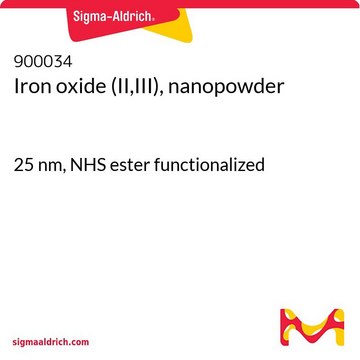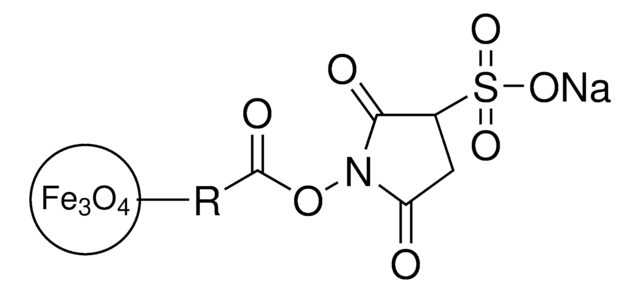900092
Iron oxide (II,III), nanoparticles
15 nm avg. part. size (TEM), streptavidin functionalized, 1 mg/mL in H2O
About This Item
Productos recomendados
form
dispersion
nanoparticles
Quality Level
concentration
1 mg/mL in H2O
avg. part. size
15 nm (TEM)
functional group
streptavidin
storage temp.
2-8°C
¿Está buscando productos similares? Visita Guía de comparación de productos
Application
Other Notes
Storage Class
12 - Non Combustible Liquids
wgk_germany
WGK 2
flash_point_f
Not applicable
flash_point_c
Not applicable
Elija entre una de las versiones más recientes:
Certificados de análisis (COA)
¿No ve la versión correcta?
Si necesita una versión concreta, puede buscar un certificado específico por el número de lote.
¿Ya tiene este producto?
Encuentre la documentación para los productos que ha comprado recientemente en la Biblioteca de documentos.
Artículos
Professor Yu Cheng and co-workers look at the recent advances of nanoparticle-based imaging contrast agents for in vivo stem cell tracking. They provide an in-depth look at popular in vivo imaging techniques, magnetic resonance imaging, fluorescence imaging, ultrasound imaging, and photoacoustic imaging.
Professor Hui Mao explores the use of superparamagnetic iron oxide nanoparticles (INOPs) that offer an alternate contrast-enhancing mechanism.
Professor Yadong Yin (University of California Riverside, USA) examines both direct (thermal decomposition, solvothermal, hydrothermal) and indirect (templated) synthesis methods of magnetite nanocrystals and reviews in detail the landscape of these various synthetic methods for magnetite nanocrystal and their applications in magnetic assembly, magnetic hyperthermia, and Li-Ion batteries.
Nuestro equipo de científicos tiene experiencia en todas las áreas de investigación: Ciencias de la vida, Ciencia de los materiales, Síntesis química, Cromatografía, Analítica y muchas otras.
Póngase en contacto con el Servicio técnico







